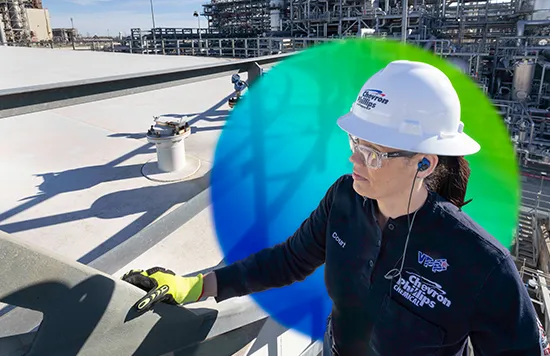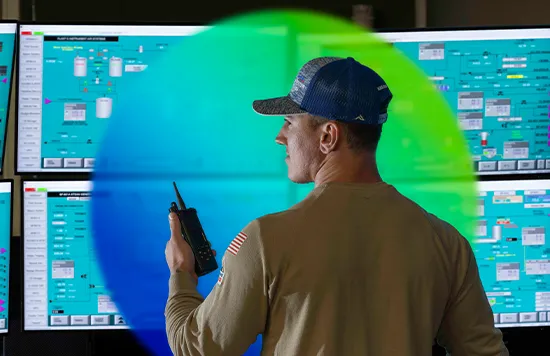Greenhouse Gas Emissions
Greenhouse Gas Emissions*
Scope 1
In 2024, CPChem’s Scope 1 emissions on an operated basis were 4.8 MMT CO2e, and 7.3 MMT CO2e on an equity-basis
Scope 2
In 2024, CPChem’s Scope 2 emissions on an operated basis amounted to 1.9 MMT CO2e, and 2.5 MMT CO2e on an equity basis, on a market-basis
In 2024, CPChem’s Scope 2 emissions on an operated basis amounted to 1.8 MMT CO2e, and 2.4 MMT CO2e on an equity basis, on a location-basis**
Scope 3
We are evaluating the organization’s Scope 3 emissions in alignment with the GHG Protocol and working to measure these GHG emissions. Our aspiration is to assemble a GHG emissions inventory of Scope 1, Scope 2 and Scope 3 emissions for reporting in the future. CPChem seeks to use its inventory data to help identify potential GHG emissions reduction opportunities.
* The calculation of CPChem’s GHG emissions data is consistent with the World Resources Institute and the World Business Council for Sustainable Development Greenhouse Gas Protocol.
** Location-based reporting uses the average emissions intensity of the local power grid, while market-based reporting reflects emissions from the specific electricity contracts a company has purchased.
Combustion of fuels in ethylene furnaces and steam boilers, and process-related emissions such as flaring represent most of CPChem’s Scope 1 emissions. CPChem’s Scope 2 emissions originate primarily from third-party providers in the generation of energy used by CPChem. Supplied energy includes power procured from the electric grid, steam cogeneration and imported steam. CPChem’s ethylene assets benefit from fleet location, the ability to crack light feedstocks, and regular improvements in energy efficiencies to enhance the competitiveness of their Scope 1 and 2 GHG emissions intensities compared to similar global facilities.
In 2024, CPChem’s absolute GHG emissions increased both on an operated and equity basis compared to the prior year. This is attributable to increased production and site enhancements. Despite an increase in total emissions, CPChem facilities are focusing on managing GHG emissions intensity while mobilizing assets to meet the global demand for its products.
During the next several years we plan to continue to grow our production capability, operationalize new, more efficient assets and implement projects identified through MACC Assessments. We remain dedicated to efficient operations and reducing GHG emission intensity and acknowledge that GHG emissions will change as we undertake these projects that are essential for achieving our goals. Explore our 2024 Performance Data Tables to learn more about emissions at CPChem.
GHG Emissions
** GHG Intensity is reported on an operated basis and represents 100% stake for wholly owned operations, inclusive of one CPChem operated Owner’s facility in Old Ocean, Texas. GHG Intensity is the ratio of the greenhouse gases emitted (MT of CO2e) divided by the products produced (MT of product).


